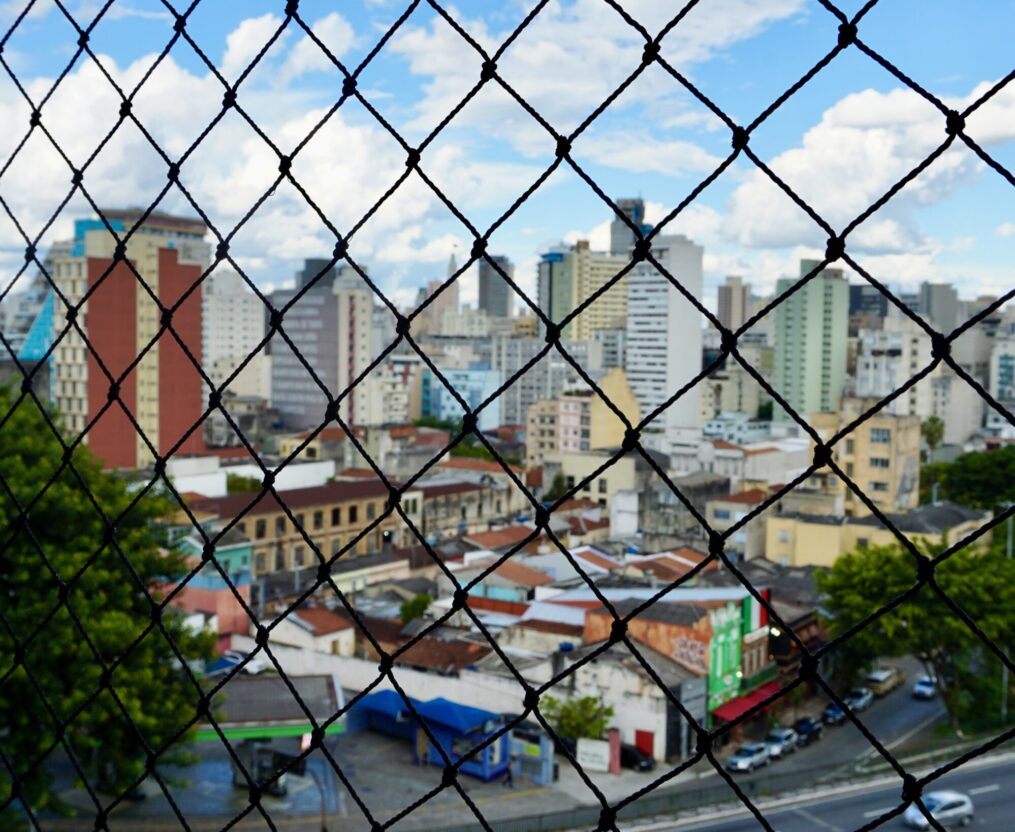Francisca invited us into home immediately after meeting us for the first time. It was tiny shack that was overcrowded with stuff she salvaged from the trash from the streets. She had a worn out sofa that was covered with a blanket and it was best not to look what was beneath it. Personally, I was overwhelmed by her hospitality and openness to receive us into her home. I knew that I was given the privilege to be part of this person’s private life. She called out all her children and she introduced her three daughters to us. The oldest was 16 years old and the youngest was about 11. They were all studying in the public school. These girls looked happy and their faces was open and friendly. Francisca was originally from the Northeast of Brazil which is the poorest part of Brazil. She came to São Paulo with her young children and learned to survive in this harsh reality. I got in touch with Francisca when I discovered this small favela community of 30 families hidden under a highway bridge. It was about 1/2 mile away from the red light district. Francisca was considered a spokesperson of the favela and I sought her out to find out if we could start some programs for the children there. While we were sitting in this tiny shack and I noticed that there were two huge TV sets. I finally broke down and asked her why she had two TV sets. She told me that one TV had only the audio and no image whereas the other one had the image but no audio. Together they had a complete TV. These are the kind of people that lived in the slums. Hospitable and resourceful and always open to receive people into their humble homes even though they did not have much to offer. This particular slum had its share of problems. There were some drug dealers and every now and then there were gun fights. Most of the people were like Francisca. They would get up early in the morning to look for useful and recyclable trash. They return late in the evening with their so-called treasures and exchange them for cash at the recycle center for enough cash to buy dinner and maybe a packet of cigarettes. In the evening they would do everything possible to be good parents. The children would do their part as well. The little ones as young as ten would shine shoes and the older girls would prepare food at home with whatever they could scrounge. I used to make pastoral visits in the evening and pray with them. I was amazed how much I learned from them. We had many special memories with the people in the slums. My favorite was watching the World Cup Soccer game at Francisca’s house with the two TV sets. The most special moment was when we had to leave Brazil abruptly for a few years. These people got some money together and bought me a Brazilian soccer jersey so that I would remember our time together. I could never forget them.
I found this documentary clip below on youtube that does a good job showing the favelas. However, the clip can only go so far. It cannot show the hospitality and openness of these people which prompted me to share about our experience with Francisca. The people who live in the slums are not saints and they are not sinners. They are people struggling to make sense of their lives in the midst of extreme violence and yet, through God’s grace, they do not harbor hatred and anger in their hearts. They consider themselves to be blessed because they can share what they have received.
The second clip is an interesting update report on the effects of the economic growth in the slums of Brazil. It also shows the present challenges but most importantly, it reveals that even in the darkest places God raises up saints to be instruments of hope for the people.

